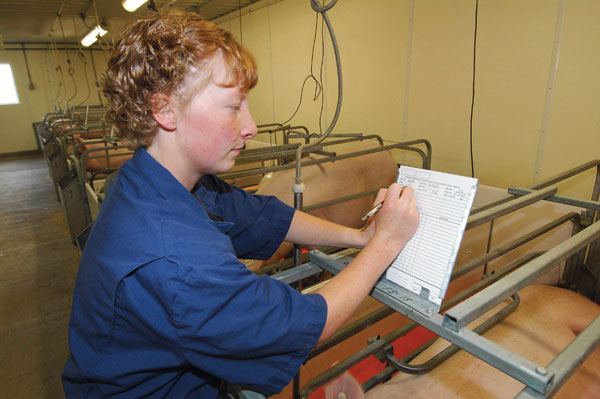Keeping Employees Safe on the Job
Besides hiring and retaining valuable farm staff, a big part of the responsibility of human resources departments is to ensure staff safety, says Joe Connor, DVM, Professional Swine Management (PSM), Carthage, IL.

Besides hiring and retaining valuable farm staff, a big part of the responsibility of human resources departments is to ensure staff safety, says Joe Connor, DVM, Professional Swine Management (PSM), Carthage, IL.
At PSM, there are ongoing, proactive steps to introduce safety measures and analyze accidents when they occur, he says.
To avoid repeatable accidents, employees at PSM are provided with initial training and education, then up-to-date training on the most common slipups on sow farms.
“Certain areas, such as using hurdles to move animals, are where people tend to get lax over time and lose sight of things that are directly related to the probability of an accident occurring,” Connor says.
Moving sows is a common safety concern because floors can become slick and hazardous.
Equally concerning is the removal of dead sows using appropriate equipment. The weight of sows can lead to muscle pulls and strains that can lead to injury, Connor suggests.
Other possible safety concerns on sow farms include using sharp equipment for castration and tail docking and repetitive tasks that can cause injury as attempts are made to improve efficiency.
Connor stresses that safety training starts with orientation at PSM, and safety training sessions are ongoing.
“It’s really the same as biosecurity — with farm safety you have to recognize certain things as carrying a risk, and if you recognize it as a risk, identify what you can do right now to mitigate that risk,” he says.
For example, there’s a limit on the number of sows that you can move at one time. If that goes well for a few months, the tendency may be to think you can move more sows, or you become distracted — and a sow moves or turns on you, Connor warns.
That’s when the value of applying repeatability and awareness in managing the situation must come into play, he says.
PSM also manages group sow housing systems. Clearly there is aggressiveness, fighting and domination of animals in pens that require different management skills compared to stalls, Connor says.
“One big change we have made in our sow-grouping systems today, compared to 20 years ago, is that even though we may have the same size groups (10-20 animals), by feeding them multiple times per day, we can manage the variation in body condition much better than we did in our older systems,” Connor observes.
In turn, employee safety in those pen systems with feeding stalls, where employees are in the pen once a day to observe feeding, is actually quite good. Vaccinations and individual treatments require a bit more patience as you walk among the group, he notes.
About the Author(s)
You May Also Like





